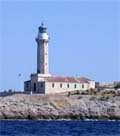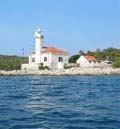About HAZADR project
The Mediterranean is one of the busiest seas in the world in terms of traffic. Even if it covers only 0.7% of the total sea
surface in the world, it hosts 30% of the overall international maritime traffic. Sea pollution by oil, hazardous & noxious
substances can happen at any time and any place, especially along the main maritime routes, and loading and unloading
terminals, where the likelihood of marine environment pollution is the highest. On average, there are annually 60 accidents
on the Mediterranean, out of which 15 result from maritime accidents of tankers transporting petroleum or chemicals. In this
context, the Adriatic Sea is no exception, especially since it represents a narrow and shallow basin along which petroleum
transport is directed towards transit ports mainly situated in the northernmost part of Adriatic. According to statistical data,
tankers sail into the Adriatic Sea almost 5,000 times a year, out of which 3,500 times into the port of Trieste alone, where
more than half of the total petroleum cargo designated for the Adriatic maritime route is unloaded yearly. To date,
numerous studies shows the exposure of the Adriatic Sea to accidents which showed that the pressure from the merchant
navy is higher here than in areas with heavy maritime traffic. Over the past 15 years, a total of 174 accidents has been
recorded on the Adriatic, none of which was of catastrophic proportions, but nevertheless some of the accidents have
made a mark on the maritime traffic & served as a warning that a joint cooperation at all levels is necessary for a prompt
and efficient response. One of those accidents took place in 2008 and involved a Turkish vessel UND ADRIYATIK. It
ended without serious environmental consequences, but this was more due to a series of fortunate circumstances than the
successful performance of the Adriatic response teams. Lack of preparedness of regions and counties on the Adriatic was
evident not only in the insufficient equipment and poorly trained personnel, but also in the delayed deployment to the site of
the accident which can be attributed to the poor coordination between the competent bodies involved in the implementation
of contingency plans on the Adriatic, which in turn stems from the fact that response procedures within contingency plans
both at the national and regional level are not harmonized. The basic problems in the cross-border area lie in the facts that
the general and specific regulations are not harmonized and that response teams for contingencies at sea are not
adequately trained nor prepared. Furthermore, only 4 out of 6 Adriatic states have adopted their own national contingency
plans in event of accidental sea pollution by oil, hazardous & noxious substances, while regional contingency plans are
practically non-existent. Finally, education and training for the staff involved in the national or regional response
mechanism is demanding basis of any good and efficient contingency planning at sea
Main objectives of the HAZADR projects are:
- Upgrade the knowledge framework on the estimated environmental and socio-economic risks in the most vulnerable Adriatic areas due to natural and human-induced factors.
- Support decision-making process in preventing, reacting and overcoming emergencies (also for the benefit of countries not directly involved in the project but treated by oil spillage contamination in case of shipwrecks or collisions).
- Harmonize, improve and shorten deployment time of the cross-border reaction capacity in the toxic and hazardous substances spill by enhancing the coordination / reaction capacity in the Adriatic EUROREGION.
- Set up a common database on the state of readiness and spatial distribution of pollution preventing equipment along the Adriatic coasts as well as the improvement of the operational instruments and oil spill mitigation programs to cope with the environmental and technological hazards.
- Improve, through cross-border joint exercises in Adriatic and the establishment of an Adriatic Training and Research Centre, the cross-border coordination reaction capacity.
- Improve an early warning system through a joint radar monitoring program based on a set of radar systems and VHF devices, leading to an advanced capacity of the entrusted Euroregion actors to identify potential sources of risks menacing ecosystems.
- Monitoring of sea-surface currents and directional waves by HF radars at the three pilot regions (North Adriatic, middle Croatian Adriatic, and south Italian coast (Apulia region),
- IOF is responsible for purchasing, installation and maintenance of HF radars in the middle part of Croatian Adriatic, including data validation, processing, archiving in database, dissemination to end users and IOFs’ web pages.


Stončica (Vis)

Ražanj (Brač)